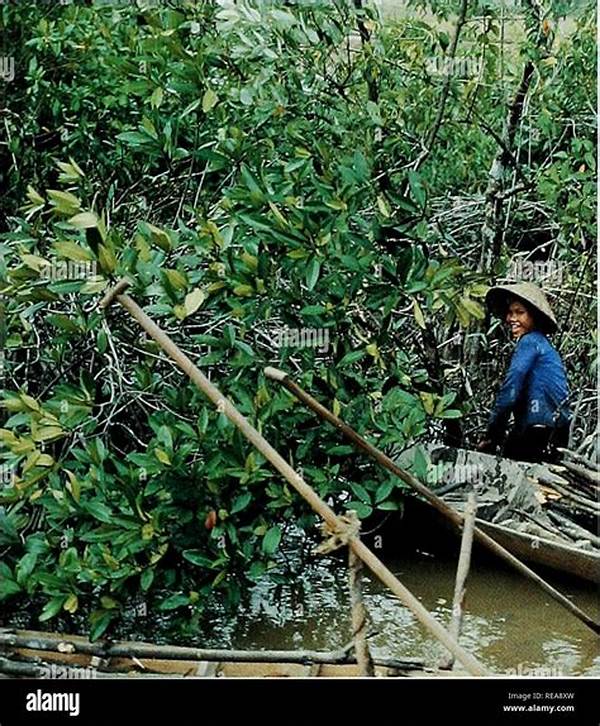The persistence of conflict and warfare poses significant threats to environmental conservation efforts around the globe. In regions plagued by violence, the intricate balance between human needs and environmental preservation becomes increasingly difficult to maintain. The disruption caused by armed conflict often leads to the deterioration of previously established conservation initiatives, presenting both immediate and long-term challenges for environmental sustainability.
The Impact of War on Conservation Efforts
In war-torn areas, conservation challenges are exacerbated by the immediate imperatives of survival and safety. The priorities of communities shift towards basic human necessities such as food, water, and shelter, leaving little room for environmental considerations. This redirection of focus undermines ongoing conservation projects, disrupting ecosystems and endangering wildlife. Additionally, the breakdown of governance structures often results in the lack of enforcement of environmental regulations, further complicating conservation efforts.
The destructive nature of warfare also directly impacts biodiversity. The use of explosive weaponry can decimate habitats, leading to the loss of flora and fauna unique to the area. Meanwhile, military operations and encroachments cause deforestation and pollution, further exacerbating the conservation challenges in war-torn areas. These aspects not only pose a direct threat to the natural environment but also impinge upon the heritage and cultural significance attached to these ecosystems.
Strategies for Addressing Conservation Challenges
1. Conservation challenges in war-torn areas necessitate the implementation of adaptive management strategies that can accommodate the fluid nature of conflict zones. This includes flexibility in project design and the ability to prioritize short-term achievements.
2. The restoration of governance and legal frameworks is crucial in addressing conservation challenges in war-torn areas. Re-establishing authority helps in enforcing environmental laws and promoting sustainable practices among communities.
3. Collaborations between international organizations and local communities can be paramount in addressing conservation challenges in war-torn areas. Such partnerships leverage local knowledge, fostering an inclusive approach to conservation.
4. Building resilience within affected ecosystems is essential to tackling conservation challenges in war-torn areas. Efforts should focus on rehabilitating damaged habitats and reinstating native species to restore balance.
5. Raising awareness about the conservation challenges in war-torn areas can mobilize global support. Highlighting the plight of these ecosystems encourages international intervention and funding, facilitating the preservation of biodiversity.
The Role of International Organizations
International organizations play a pivotal role in mitigating conservation challenges in war-torn areas. Their presence not only provides essential funding and expertise but also fosters a platform for collaboration and dialogue among stakeholders. These entities often act as intermediaries, ensuring that conservation remains a priority amidst the prevailing chaos. By facilitating negotiations and building alliances, international organizations help prioritize the integration of conservation initiatives in post-conflict recovery plans.
Moreover, these organizations often spearhead research efforts to assess the ecological impact of conflict and devise adaptive management strategies. Such research is crucial in understanding the unique dynamics of war-torn ecosystems, enabling tailored conservation approaches. Furthermore, they advocate for policy changes at both local and international levels, pressing for stricter regulations to prevent further environmental degradation.
Community Involvement in Conservation
Community involvement is indispensable when addressing conservation challenges in war-torn areas. Engaging local populations in conservation activities not only empowers them but also ensures the sustainability of these initiatives. Effective conservation strategies capitalize on the indigenous knowledge and practices of local communities, integrating them into formal conservation frameworks. This participatory approach fosters a sense of ownership among community members, encouraging self-reliance and resilience.
Building trust within the local community is a vital step in overcoming conservation challenges in such areas. By addressing the immediate needs of these communities, conservation initiatives can engender goodwill and cooperation, paving the way for more comprehensive environmental projects. Education and awareness-raising programs further bolster community support, highlighting the intrinsic link between ecosystem health and human well-being.
The Future of Conservation in Conflict Zones
Looking forward, the future of conservation in war-torn areas hinges on innovative and integrated solutions. Technological advancements such as remote sensing and drone monitoring can provide invaluable assistance in data collection and surveillance, overcoming the logistical difficulties posed by conflict. Additionally, new conservation funding mechanisms are needed to ensure continued support and resource allocation for these beleaguered environments.
A holistic approach is essential to addressing conservation challenges in war-torn areas. This entails recognizing the interconnectedness of social, economic, and environmental factors in shaping sustainable solutions. By prioritizing peace-building and conflict resolution alongside biodiversity preservation, the international community can create a conducive environment for enduring conservation efforts.
Conclusion
In summary, the conservation challenges in war-torn areas are multifaceted and demand a collaborative effort among international organizations, local communities, and governments. The restoration of governance structures and community involvement are pivotal in ensuring the longevity of conservation initiatives. Innovative strategies and technological advancements offer hope for the future, providing the tools necessary to navigate the complex landscape of conservation in conflict zones.
Addressing these challenges is imperative not only for the preservation of biodiversity but also for the long-term stability and prosperity of affected regions. By fostering global awareness and support, it is possible to safeguard the environmental riches of war-torn areas, ensuring they endure for generations to come. The concerted efforts of all stakeholders are crucial in turning the tide in favor of environmental resilience and sustainability.





